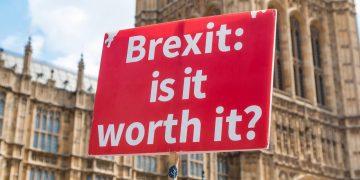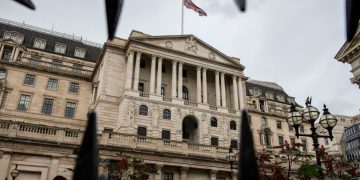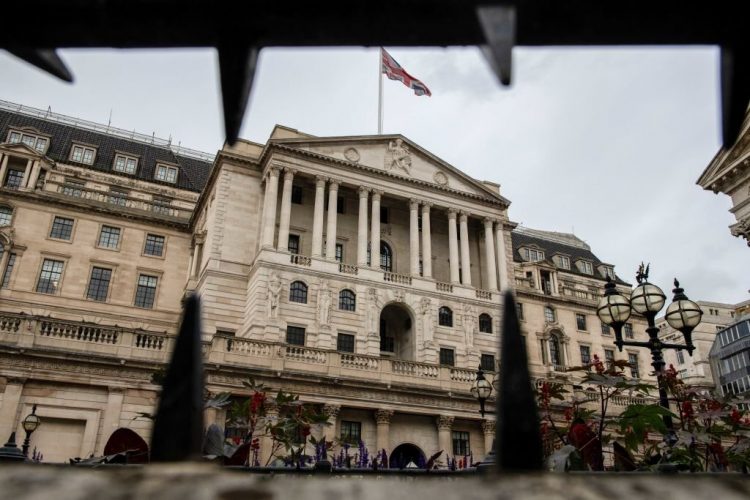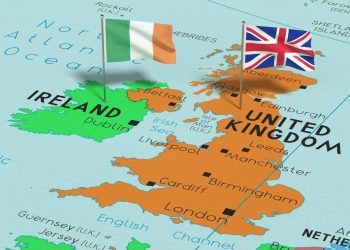Doubling of UK government borrowing
The long-term consequences of the high UK national debt rate are increased. The public debt exceeded 100% of the UK’s GDP in May, the highest level since 1961, as UK government borrowing more than doubled, the Office for National Statistics said. The last time this country’s public debt reached over 100% was in March 1961.
The high figure of the net debt of the British public sector
According to the Office for National Statistics, the net debt of the British public sector reached a staggering 2.6 trillion pounds ($3.3 trillion) by the end of May, almost equal to 100.1 per cent of its gross domestic product. This figure means that the borrowing rate of the British public sector is currently more significant than the economy of this country. Also, this British institution announced that the borrowing amount of the UK government in May was 20 billion pounds.
The reasons for the increase in the UK national debt
Among the reasons for the increase in borrowing by the government of this country are the rise in energy costs and the implementation of energy support plans. Statistics UK estimates the government spent almost £1.5 billion on energy-related projects in May. It is said that this project cost the country 29.7 billion pounds in the first six months of this year.
UK national debt to GDP ratio
For the first time since 1961, England’s debt-to-GDP ratio has breached the 100% mark. Although this ratio temporarily crossed the 100% threshold during the pandemic, subsequent improvements in production figures brought it back down. The persistent rise in this ratio can be attributed to the annual expansion of government borrowing.
As of the end of May, year-to-date UK government borrowing has reached £20 billion. This increase in lending can be attributed to several factors, including the surge in energy costs, the implementation of energy support programs, expenditures related to inflation interest, and debt interest payments.
A sharp increase in the borrowing figure of the UK government
May’s borrowing figure was £3bn less than in April but up £10.7bn in the same period last year. May’s borrowing is the second heaviest since monthly government borrowing began in 1993. Economists had predicted borrowing of 19.5 billion pounds for May, but the final figure for government borrowing in the first two months of the fiscal year, April and May, reached 42.9 billion pounds.
Energy costs and increasing UK national debt
The UK Statistics Center’s calculations indicate that the government allocated approximately £1.5 billion towards energy-related initiatives in May. These initiatives included setting energy bill caps and providing discounts on energy bills. It is reported that these energy-related programs have cumulatively cost the UK £29.7 billion in the first half of this year.
Additionally, the Office for Budget Responsibility, responsible for overseeing the country’s finances, has noted that the recent agreement regarding NHS payments played a role in the increased borrowing. This agreement added £2.7 billion to government expenditures in the previous month.
British debt is more than 100% of income.
According to Evening Standard, since May 1993, this is the second largest debt of the country’s government in May. Economic experts had estimated that the UK government would borrow 19.5 billion pounds last month. According to a report by the UK’s ONS, the British now carry more than 100% of their annual income in debt. According to the Evening Standard, although such an incident was seen during the coronavirus pandemic, it was immediately resolved.
The impact of the Ukraine-Russia war on the increase in UK inflation
UK’s Chancellor of the Exchequer, Jeremy Hunt, said the government had to make “tough decisions” after Putin attacked Ukraine to balance revenues and spending. Following the sanctions imposed on Russia by Western governments due to the increase in energy and food prices, inflation in these countries increased unprecedentedly and reached the highest level in more than four decades. To fight the ever-increasing inflation, the Bank of England (BoE) increased the primary interest rate to its highest level of 5.0%.
An unprecedented increase in interest rates by the Bank of England
The Bank of England has intensified its efforts to combat inflation by implementing a surprising and substantial increase in interest rates. Andrew Bailey, the head of the Bank of England, raised the key monetary policy rate by half a percentage point on Thursday, bringing it to 5.0 per cent. This move caught the attention of currency analysts, who had anticipated only a quarter-point hike in interest rates. This marks the 13th consecutive step in the interest rate escalation process.
The failure of the Bank of England to curb inflation
The Bank of England has been trying to curb the very alarming inflation in this country for about a year and a half, but it has yet to be successful. UK’s inflation rate has surprisingly remained at 8.7%, the highest among the major Western industrialized nations. Bank of England Governor Bailey recently warned that inflation will likely take much longer to get under control than expected. The so-called core inflation rate – which strips out fluctuations in energy, food and tobacco prices – even rose to 7.1 per cent in May after falling to 6.8 per cent in April.
Consumer price increase based on statistics
The long-term consequence of the high UK national debt rate is that consumer prices will also increase. According to the latest ONS report, core inflation rose in the UK, excluding fluctuating energy, food and drink prices. According to this report, consumer prices have increased by 8.7% compared to the same month last year. Economists had expected a decline to 8.4 per cent. The cost of living has risen by 0.7 per cent compared to the previous month, which is more than expected. In this way, the highest inflation rate since March 1992 was reached in May.
The most severe contraction process of the UK economy
Experts consider core inflation a more reliable indicator of underlying price trends. Many central banks, including the Bank of England, are paying particular attention to this inflation. Interest rates in the UK are currently at their highest level since the 2008 financial crisis. This is one of the most severe contractionary processes the UK economy has ever faced. The reason for this is the sharp inflation increase, mainly caused by Russia’s war against Ukraine.
It is becoming harder to control the increasing UK national debt.
Therefore, the long-term consequences of the high UK national debt rate are negative. Economic experts say that when a government’s debt exceeds the UK’s GDP, controlling the debt process and regulating public income and expenditure becomes difficult due to increased interest. Also, the future generations will have to deal with the crisis of accumulation of public debt and uncertain economic future.




























